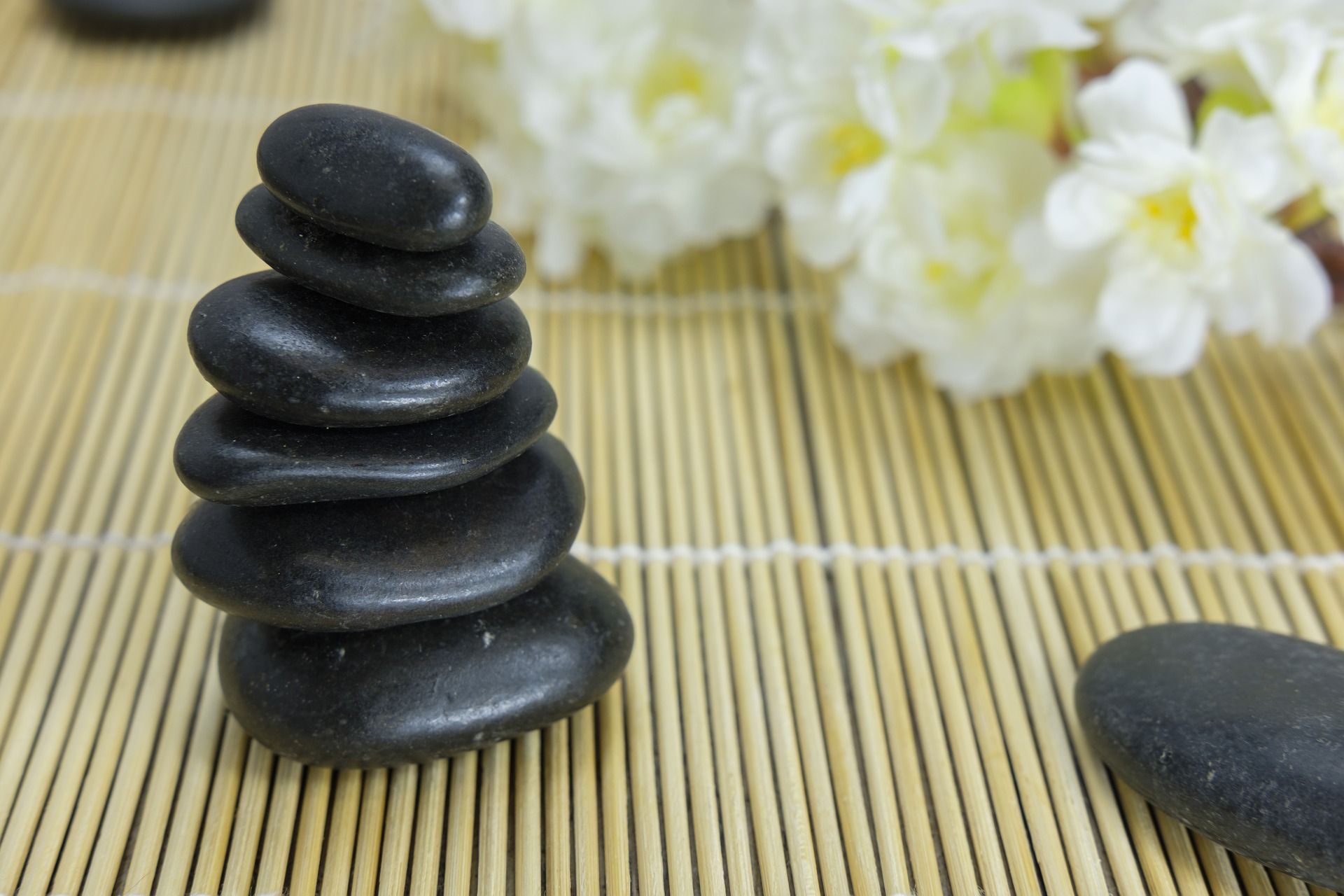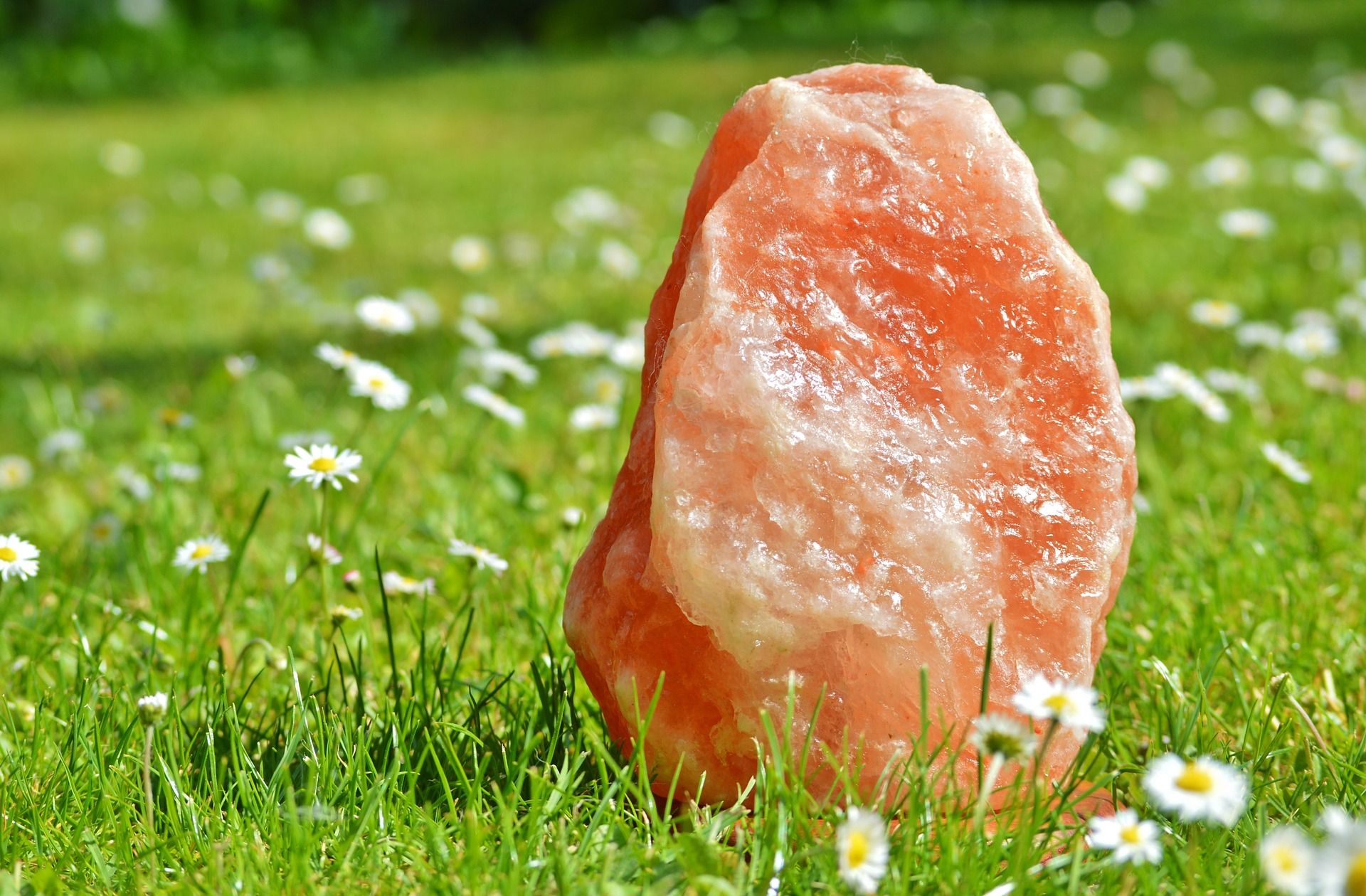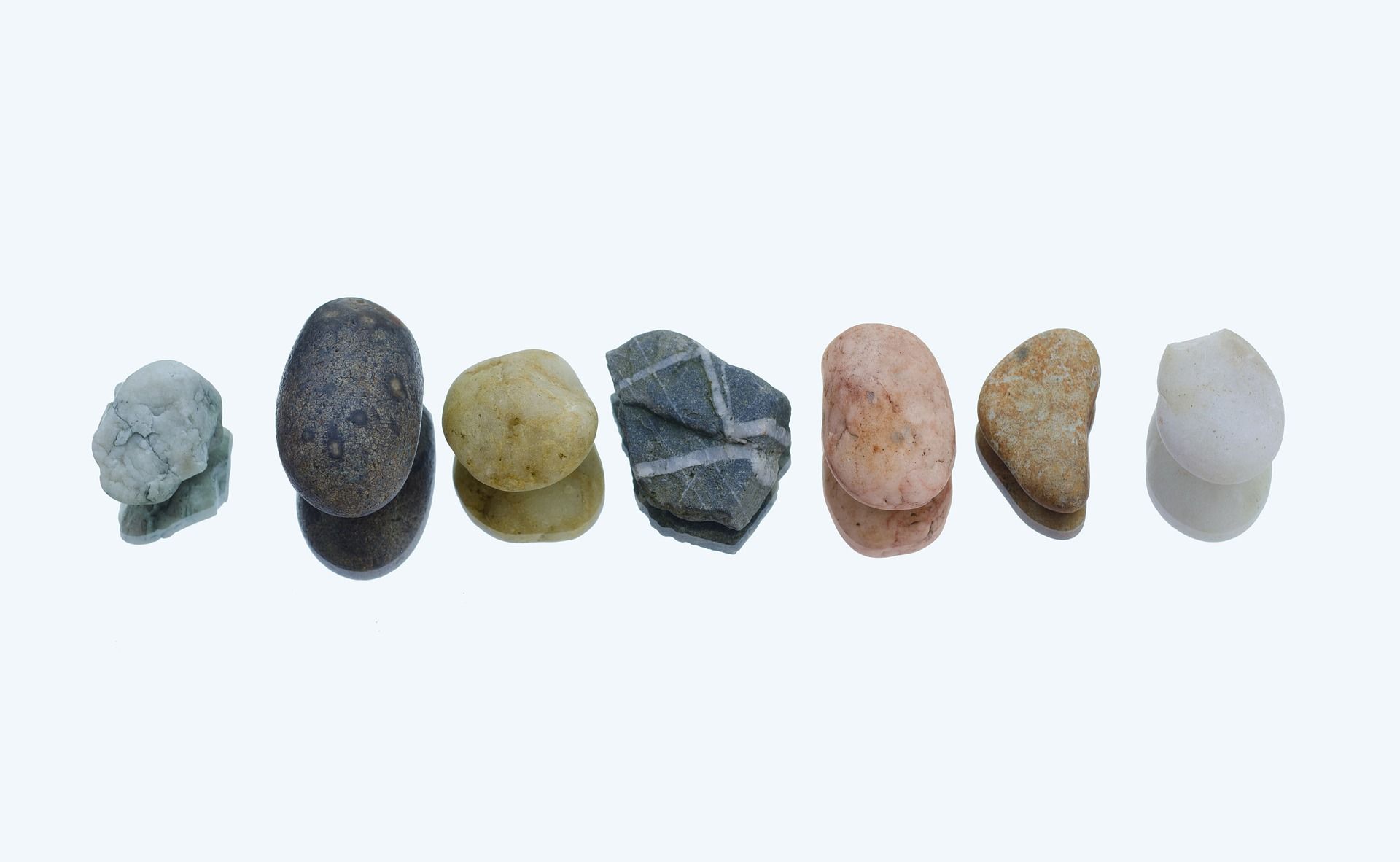Hot Stone Massage
A stone massage is a massage that uses smooth, flat, and heated or cool rocks placed at certain points on the body.
Introduction
A stone massage is a massage that uses smooth, flat, and heated or cool rocks placed at certain points on the body.
Variations
1. Hot Stone massage
2. Cold Stone massage
Stones used for massage
1. Basalt stone:
It is a type of volcanic rock with high silica and iron content, and therefore retains heat during the massage.
2. River rocks:
They are generally very smooth-surfaced stones.

3. Himalayan salt stone:
Himalayan salt possesses unique healing properties. It contains 84 essential minerals which can be absorbed through the skin. It also gently exfoliates the skin.

4. Marble stone:
Marble is cool to the touch. It is used in cold stone massage.
5. Chakra stones:
The seven chakras of the body are associated with one gemstone each. The gem stones are placed on the chakras with which they are associated. This augments the energy flow through the chakras.

History
1. India
Hot stone massage therapy was first practiced thousands of years ago in India. In Ayurveda it is called as “shila abhyanga”.
2. China
Chinese used heated stones more than 2,000 years ago as a means of improving the function of internal organs.
3. Spain
Spanish folk healers called curanderas used heated stones to relieve period pain or menstrual cramps and cold stones to slow bleeding after child birth.
4. Ancient Greece and Rome
Stone massage was present in Ancient Greece and Rome. Stone massage treatments were used in conjunction with Roman baths where the benefits of stone massage were combined with hot immersion baths and the cooling effects of marble stone and cold pools.
5. Hawaii
In Hawaii, lava rocks were warmed and laid directly on the body to boost blood circulation.
6. North America
Among the various people groups of North America, hot stones were in common use in “sweat lodges,” which are much akin to saunas and in fact, are still so used to this day.
Additionally, Americans would rub hot stones against hurting parts of the body during ritual healing and rub them up against the abdomen as a way to combat cramps.
7. Modern history
Stone massage was “rediscovered” by Mary Nelson in 1993.
Ms. Nelson stumbled upon the technique quite by accident while massaging her niece during a sauna session. She, being a professional masseuse, soon found creative ways to integrate hot stone massage therapy into her existing practice. She dubbed the “new” techniques “La Stone Therapy.”
Before long, Mary Nelson trained others in hot stone massaging methods and had them travel the world, teaching it to yet others. And today, hot stone massage therapy is relatively well known and popular in almost every region of the globe.
Procedure
Pre-treatment:
1. Take a detailed medical history of the client. Make sure that this procedure is not contraindicated for the client.
2. Obtain informed consent before starting the procedure.
3. Prepare a massage couch with all requirements like towels for draping, stools, cushions for support etc…
4. Ensure personal hygiene of masseur and hygiene of the surroundings.
5. Ask the client to lie down comfortably and ensure that the client’s comfort and privacy are not violated. Expose the body parts to be massaged. Cover the other areas.
6. Position the patient in prone or supine posture, as required.
7. Prepare the stones for massage. Stones are placed into an electric slow-cooker, sauce pan or a purpose-built device which is filled with water. The water is typically heated to 120-125 °F. Heat the stones for 30 minutes.
8. If using cold stones as well, place the marble stones in a bowl of iced water.
Treatment Proper:
1. Place the stones on the specific parts of the body as required. The stones may be placed:
- along the spine
- on buttocks and hips
- on the neck and shoulder
- on the abdomen
- on the chest
- on the face
- on the palms
- on the feet and toes
2. Allow the stones to stay undisturbed for few a minutes.
3. Massage the body using Swedish massage techniques such as:
- long strokes
- circular movements
- vibration
- tapping
- kneading
4. Sometimes, cold stones are also used during a hot stone massage.
Cold stones may be used after hot stones to calm any engorged blood vessels and to soothe the skin.
Precautions
1. The stones should be no hotter than 125 degrees Fahrenheit, or they will be too hot to handle and will burn the skin of the client.
2. Use lower heat on face, neck, scalp and other sensitive areas.
3. Support the sensitive areas of the body with cushions. (breasts and pelvis in women; pelvic region in men)
4. Ensure that the stones are smooth to avoid scratching or injuring the client.
5. Make sure that the stones are not too heavy for the client to bear.
6. Be aware of the privacy and modesty of the client
Duration
It is given for a duration of 30 minutes.
Benefits
• Reduces chronic stress and tension
• Increases flexibility in joints, aiding in easier mobility and movement
• Relieves pain and tension created by strained and contracted muscles
Indications
1. Musculoskeletal disorders
Arthritis, back pain, carpal tunnel syndrome, fibromyalgia, neck pain, sciatica, shoulder soreness, stiffness, strained muscles and tendons, whiplash pain
2. Psychological disorders
Stress, PTSD, mood disturbances
3. Rejuvenation and relaxation
Contraindications
1. A bleeding disorder or if the client is taking blood thinners
2. Burns on the skin
3. Open wounds
4. A history of blood clots
5. Had surgery in the last 6 weeks
6. A fracture or severe osteoporosis
7. A low platelet count (thrombocytopenia)
8. Diabetes mellitus type 2
9. Pregnant women
